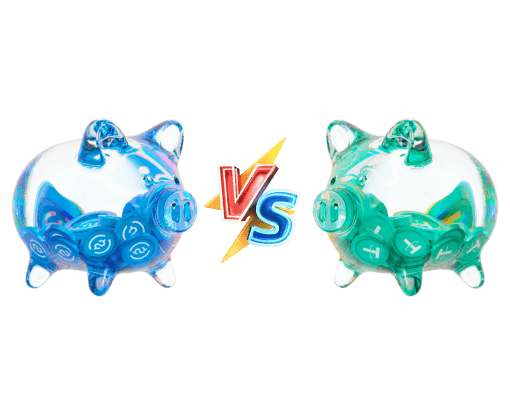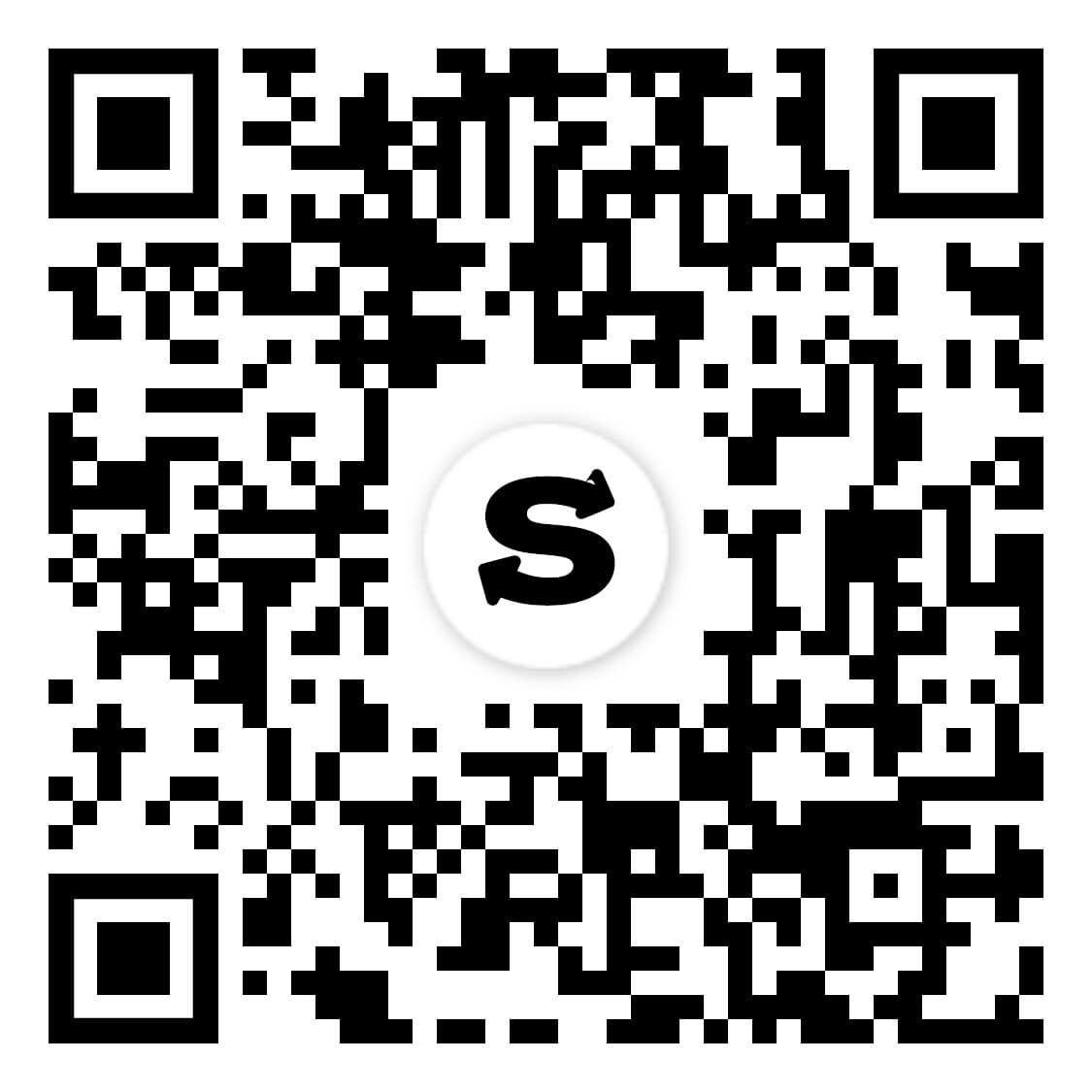USDT Vs USDC:
Which Stablecoin to Choose?


USDC vs. USDT: Understanding the Top Stablecoins
Stablecoins are digital currencies designed to maintain a value equivalent to a real-world asset, reducing the volatility common in the cryptocurrency market. These coins offer a reliable store of value and are typically pegged to fiat currencies like the U.S. dollar, the euro, or the Japanese yen. This article compares two of the largest USD-backed stablecoins: USD Coin (USDC) and Tether (USDT). We will explore their key differences to help you determine which best suits your financial strategy.
What Are Stablecoins?
Stablecoins derive their name from their value, which is designed to remain steady by mirroring a specific asset. This underlying asset can be a fiat currency, another cryptocurrency, or even a precious metal. Fiat-backed stablecoins are the most prevalent, as the financial and crypto markets typically measure value in U.S. dollars.
Key Types of Stablecoins
Stablecoins can be categorized by their collateral and governance models:
- Fiat-Collateralized: These are backed by sovereign currencies held in reserve, such as Tether (USDT) and USD Coin (USDC), which are pegged to the U.S. dollar. The issuing company holds funds in audited accounts to match the circulating supply of the stablecoin.
- Crypto-Collateralized: These stablecoins are backed by a reserve of other cryptocurrencies. To account for the volatility of the collateral, they are often over-collateralized.
- Commodity-Collateralized: These are backed by physical assets like precious metals. For example, Tether Gold (XAUt) is pegged to the price of one troy ounce of gold.
- Algorithmic: These stablecoins are not backed by any asset. Instead, they use algorithms and smart contracts to manage the token supply, automatically adjusting it to keep the price stable.
Each type serves different purposes. Fiat-backed stablecoins are popular among everyday traders and investors looking to protect profits from market volatility. In contrast, crypto-collateralized tokens are more commonly used by long-term crypto investors and participants in the decentralized finance (DeFi) ecosystem.
USDT vs. USDC: A Detailed Comparison
USDT and USDC are the two most dominant stablecoins in the cryptocurrency market, with their values pegged 1:1 to the U.S. dollar. They are foundational to the ecosystem, used extensively for trading, storing value, and transferring funds between exchanges. While they share the goal of price stability, their operational frameworks, transparency, and regulatory approaches create important distinctions.
Core Similarities
Both USDT and USDC are centralized stablecoins issued by private companies—Tether Limited and Circle, respectively. This centralization allows them to manage reserves and maintain the peg to the U.S. dollar. However, it also means that the issuers can freeze assets if they detect illicit activity or are compelled by law enforcement. Both coins are widely integrated across centralized and decentralized exchanges, offering high liquidity and flexibility to users.
Key Differences
The primary difference lies in their reserve composition and transparency. Circle, the issuer of USDC, holds its reserves in cash and short-term U.S. Treasury bonds, providing monthly attestation reports from independent accounting firms. This commitment to transparency and regulatory compliance has made USDC a preferred choice for institutions and cautious investors. In contrast, Tether's reserves for USDT include a mix of cash, cash equivalents, secured loans, corporate bonds, and other investments. While Tether has increased its reporting frequency, it has faced scrutiny over the composition and complete backing of its reserves. Due to its earlier launch, USDT has a larger market capitalization and higher trading volume, making it the most liquid stablecoin, especially on non-U.S. exchanges.
What Is Tether (USDT)?
Launched in 2014, Tether (USDT) is a peer-to-peer cryptocurrency that pioneered the fiat-backed stablecoin model. Its value is pegged to the U.S. dollar, offering a stable asset for traders to move in and out of more volatile cryptocurrencies. With a market capitalization exceeding $110 billion, it is the most widely used stablecoin.
How USDT Works
Tether Limited, the issuer, creates new USDT tokens when a user deposits U.S. dollars into its reserves. The company then holds these reserves—composed of fiat currency, loans, securities, and other assets—to back the circulating supply of USDT. Conversely, when a user redeems USDT for fiat, Tether burns the tokens and returns the corresponding amount of U.S. dollars, charging a small fee. Tether publishes quarterly reports on its reserves to maintain confidence, though these reports have faced criticism for their lack of detail.
Advantages and Disadvantages of USDT
The key advantages of USDT include its exceptional liquidity, price stability, and widespread acceptance on nearly every crypto platform. Its availability on numerous blockchains, including Ethereum, TRON, and Solana, helps users minimize transaction fees. However, its main drawbacks are its centralized control and the ongoing concerns regarding the transparency and quality of its reserve assets.
How to Acquire and Store USDT
USDT can be purchased on most major centralized and decentralized crypto exchanges, such as Binance, Kraken, and Uniswap. For storage, users can choose from various wallets that support the blockchains USDT operates on. Options include hardware wallets like Ledger and Trezor for maximum security or software wallets like MetaMask and Trust Wallet for convenience.
What Is USD Coin (USDC)?
USD Coin (USDC) is a major stablecoin launched in 2018 by the Centre Consortium, a partnership between Circle and the cryptocurrency exchange Coinbase. Known for its transparency and regulatory compliance, USDC has become the second-largest stablecoin, with a market capitalization of over $33 billion.
How USDC Works
The process of creating USDC is known as tokenization. When a user sends U.S. dollars to a licensed issuer like Circle, the issuer's smart contract mints an equivalent amount of USDC tokens. These new tokens are sent to the user's wallet, while the deposited dollars are held in segregated accounts as reserves. To redeem USDC, the user sends tokens back to the issuer. The issuer then "burns" the tokens, removing them from circulation, and transfers the corresponding U.S. dollar amount back to the user’s bank account. All issuers are required to publish regular, audited reports on their reserves.
Advantages and Disadvantages of USDC
USDC's primary advantages are its strong regulatory compliance, high transparency with monthly attestations, and backing by secure assets like cash and short-term U.S. government securities. It is highly liquid and available on most major platforms. Its main disadvantage is its high degree of centralization, which means Circle can freeze funds if required by regulators.
How to Acquire and Store USDC
USDC is available for purchase on many centralized and decentralized exchanges, including Coinbase, Binance, and Uniswap. For storage, any wallet that supports Ethereum's ERC-20 standard or other native chains like Solana and Avalanche can hold USDC. Popular choices include Trust Wallet, MetaMask, Exodus, and hardware wallets like Ledger.
Conclusion
Both USDT and USDC are crucial components of the crypto ecosystem, providing stability and liquidity. USDT remains the market leader due to its history and deep integration, making it ideal for high-frequency trading. USDC, on the other hand, appeals to those who prioritize transparency and regulatory assurance. The choice between them depends on individual priorities regarding risk, trust, and use case.
Frequently asked questions
-
Is it safe to convert between USDC and USDT?
Yes, converting between USDC and USDT is a common practice on reputable exchanges. Both are leading stablecoins, but users should be aware of transaction fees and potential network congestion on the blockchains they use. -
Which stablecoin is considered more transparent?
USDC is generally considered more transparent. Its issuer, Circle, provides monthly, independently audited reports detailing its reserves, which consist solely of cash and short-term U.S. government securities. Tether's reports on USDT reserves are less detailed and its holdings are more complex. -
Why is USDT more popular than USDC?
USDT's popularity stems from its first-mover advantage, having launched in 2014. It established itself as the primary stablecoin for trading on major international exchanges, leading to deeper liquidity and wider integration across the crypto ecosystem. -
What are the main risks associated with USDC and USDT?
The main risks are centralization and the quality of reserves. Both are controlled by single entities that can freeze assets. Additionally, any failure to maintain sufficient, high-quality reserves to back every coin could jeopardize their stability, though this risk is mitigated by audits and regulatory oversight. -
Can USDC or USDT lose their 1:1 peg to the US dollar?
Yes, while rare, stablecoins can temporarily lose their peg during extreme market volatility or due to a loss of confidence in their reserves. Both USDC and USDT have experienced minor, short-lived deviations from $1.00 in the past but have historically recovered their peg quickly.
Our website uses cookies. Our Cookie Policy
